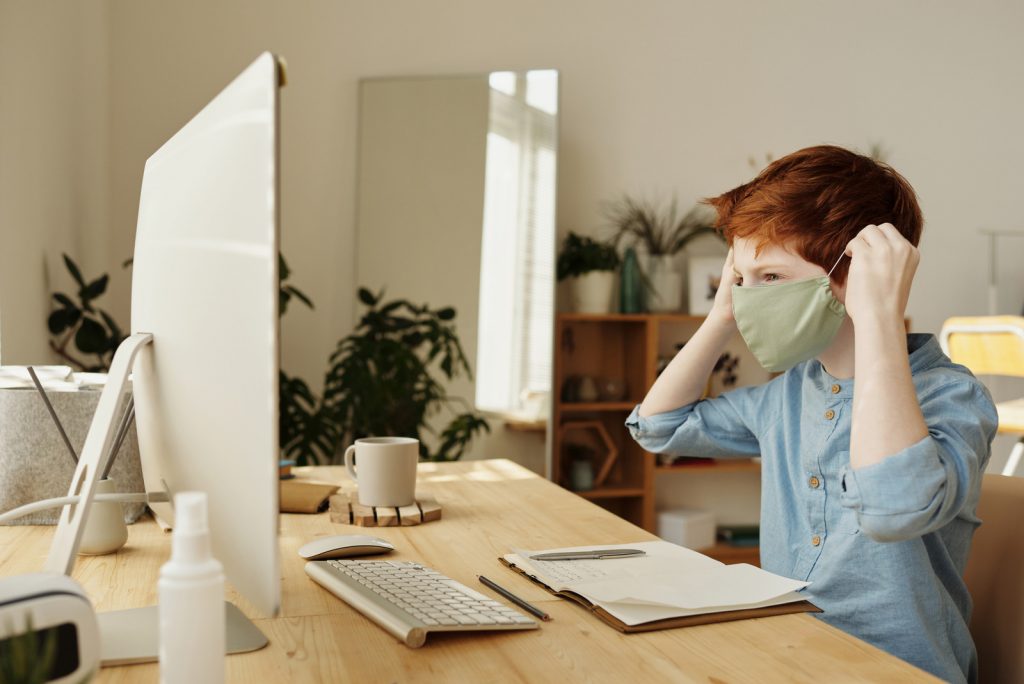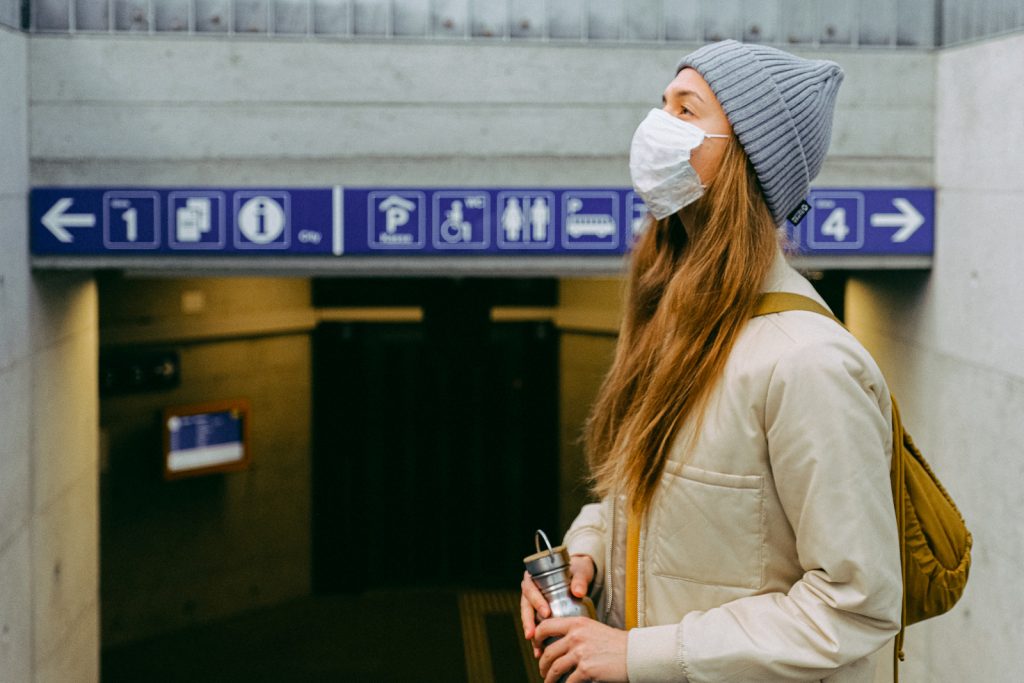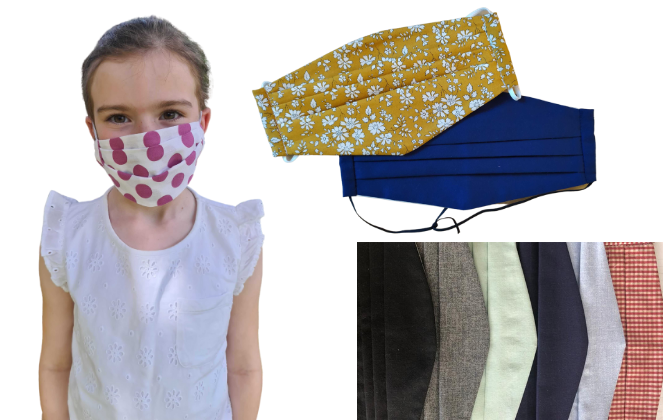First Written 11/05/2020
Updated 03/02/2021
I’m sure the cabin fever has well and truly set in. Lockdown round three has been particularly challenging. We are bombarded with information about what to do but there are so many sources its difficult to piece it all together sometimes.
The debate on facemasks was originally confusing at best. Which was especially difficult for families who have children to protect and perhaps are caring for older, more vulnerable relatives. So, we have collated together the up to date guidance from official, reliable sources to put your mind at ease to help you make the best choice for you and your family.

What types of face masks are there?
N95 respirator mask.
These masks are characterised by having a very close fit. In fact they create a seal around the nose and mouth. They are highly effective and filter out 95% or more of air particles. If they fit correctly that is. This form of mask needs to fit perfectly to be effective. N95 masks are part of the critical supplies that the NHS needs and should be reserved for health care professionals only. You need training on how to wear these effectively otherwise they will not work.
Surgical Face Mask
Surgical masks are more loose fitting and if worn correctly is designed to block larger-particles, droplets, splashes and sprays or splatters what would contain germs. Preventing these germs getting in contact with your mouth and nose gives you protection from viruses and bacteria. Some of these kinds of masks filter out between 60 to 80% of particles. They also prevent the wearer from coughing or sneezing on others. Just like N95 respirators you need training on how to wear these effectively otherwise they will not work. Surgical masks used within medical centres and hospitals have certain standards and regulations that they must adhere to be effective. Surgical masks are not intended to be used more than once. Again, these are a priority for the NHS and private health clinics.
Face Mask/Face Covering
These are non-regulated facial coverings that prevent the wearer from passing particles from their mouth or nose onto others. These are loose fitting but should cover the area around the nose and mouth adequately. They come in a variety of designs with comfort in mind. These face coverings can be reused or single-use. They are made from a variety of materials but most commonly high percentages of cotton.

Are face masks recommended?
Well, it depends on who you ask! The official advice from each governing body is as follows:
World Health Organization (WHO)
WHO: They have reported that facemasks should now be a normal precaution when spending time with anyone outside of your own household. It’s still important to maintain social distancing. They acknowledge that there may be different laws and guidance depending on your local authority. Masks are only effective when maintaining a high level of hand cleanliness with alcohol-based hand rub or soap and water. THEY ARE NOT SUBSTITUTES FOR PROPER HYGIENE AND DISTANCING.
Scottish Government
Scottish Government: It is law to wear a facemask in public places where there are other members of your community unless you have a medical exception due to a condition such asthma for example or are a child under the age of 5 years old. So that includes, shops, cafes, banks, places of worship, libraries, shopping centres, doctors surgeries, dentist etc. For a full list please see here. As many people can have the virus without showing any symptoms wearing a mask gives you some additional protection against transmission from unwitting members of the public. Fines are in place for non compliance. Wearing facial coverings must not be used as an alternative to any other precautions in any circumstances. Where facemasks are used it must be in addition to meticulous hand washing, social distancing measures and other guidance we have been provided with.
UK government
UK government: They have issued guidance very similar to that of the Scottish Government currently. Wearing of facemasks in public buildings are compulsory and fines are in place for non compliance of this law. Full details can be found here. Exceptions for children are those under the age of 11 in England.
Wales and Ireland
For the other devolved nations please see Wales and Northern Ireland.
Elsewhere
Elsewhere, more than 50 countries worldwide made it mandatory to wear face masks in certain or all public areas. For example, in Germany face masks have been made compulsory while shopping and on public transport. In Spain a requirement for using public transport along with a whole host of other nations.
Why would I wear a face mask in public?
In the UK you are required by law to wear a face mask or other form of facial covering. Because the virus, like many other kinds, is transferred through droplets from coughing, breathing or sneezing a facemask prevents these particles from being inhaled by others you come into contact with. So if you are a person with Covid-19 but you are asymptomatic (you don’t know you have it) then you can shield others who may be more vulnerable to suffering severe life-threatening complications. See infographic below:
What should I look for when buying my own?
You could spend hours scouring the various options and designs.
The material of your face mask can have a big impact on how effective it is at protection you. A good mask uses material that can capture enough particles but is still breathable enough for you to wear. If you’re buying a reusable option (a more eco-friendly option) then you will need to think about durability. Furthermore, how many might you need on a rotation? After all, you don’t just want to carry any nasty bacteria or viruses’ home with you. Something with a high thread count/cotton content would allow you to put it on a boil wash when you get home without too much discolouration or shrinkage.
Something that has at least two layers of material if not more might capture more particles. Certainly, something that covers up over your nose and mouth to your chin. When thinking about comfort, secure straps are also important. You don’t want the mask to be too loose and slide off or be uncomfortable. There are even filters available that can be fitted to provide a higher level of protection. Although, if that wouldn’t suit you then there are plenty of facemasks without filters to choose from that will offer some protection.
How to wear a facemask?
I cannot be alone in my sheer frustration when I see people with facemasks around their chin chatting to a neighbour they have bumped into at the shop.
So let’s say it all together: A face covering should cover your MOUTH and NOSE and CHIN.
Don’t take it off to sneeze as it defeats the point. Don’t take it off at the checkout in a supermarket. If you’re wearing a facemask please do so responsibly.
I want one!
There are lots of places offering face masks online and in fact, there are ways that you can make your own at home. A simple search online will find you lots of options including on Etsy by crafters. You can add our filters or those of your own choice into the plain non pleated facemasks but the decision is always yours as to whether the additional layer will be more effective. Always remove filters before washing as they are single use.

What designs of face mask should I look for?
Something that covers a large portion of your face may not seem very attractive especially when many people are feeling low in the absence of family or friends. However, this need not be a problem. There are lost of cheery prints and patterns available.
And what about the kids?
There are lots of children’s face masks available for older children. According to GP Dr Daniel Atkinson “There are risks associated with babies and infants wearing masks.”. Given that small children have narrower airways a facial covering would make it much harder for them to breathe and could well be not only a suffocation risk but also a risk of entanglement in any elastic or fastenings. Young children wearing a mask would also be more likely to touch there face making it more of a risk of transmission.

Where and how you should wear it?
There is no merit in wearing a facial covering at home so you don’t have to worry about doing the house work with a face mask on. Facial coverings are designed for public spaces where you’d be coming into contact with people out with your own household. In order to prevent you from contaminating others or yourself you need to familiarise yourself with how to use a facial covering properly. Otherwise it has the potential to have a negative impact.
According to the World Health Organisation you must:
- Clean hands with alcohol-based hand rub or soap and water first.
- Cover mouth and nose with mask and make sure there are no gaps between your face and the mask.
- Avoid touching the mask while using it; if you do, clean your hands with alcohol-based hand rub or soap and water.
- Replace the mask with a new one as soon as it is damp and do not re-use single-use masks.
- To remove the mask: remove it from behind (do not touch the front of the mask); discard immediately in a closed bin; clean hands with alcohol-based hand rub or soap and water.
Maybe before going out with your facemasks you can practice these steps to make sure you understand how to wear the facemask and make sure it fits correctly.
Make sure that you keep up to date on the latest guidance from your local authority as the best course of action might change throughout the course of the pandemic.
If you enjoyed this post and found it useful why not check out our other posts that might be useful to you?

